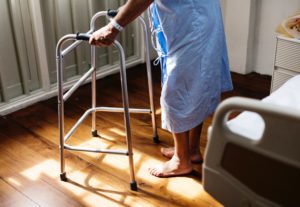
Oregon Eldercare Support Foundation (OESF), formerly Oregon Health Care Foundation, is a nonprofit, charitable organization established in 2000.
Oregon Eldercare Support Foundation (OESF), formerly Oregon Health Care Foundation, is a nonprofit, charitable organization established in 2000. The mission of OESF is: to provide educational opportunities for current & future employees working in long term care communities; to offer programs that enrich the lives of seniors, and to enhance the public understanding and appreciation of the long term care profession.
Scholarship Program
OESF Scholarship Program is designed to help build careers & provide professional development opportunities for those who work or seek to work in the long term care profession. Scholarships are awarded twice annually in the Spring and Fall.
Each year OESF awards scholarships for general studies, in addition to scholarships for specialized study, these scholarships are often made possible through the named scholarship program. Organizations donate large sums of money on an annual basis, typically at least $5000, and then award the scholarship based on criteria they have created. Generations, Pinnacle Quality Insight and Margaret Murphy Carley all have created named scholarship programs.
Generally, scholarship awards support professional development through certification, licensure, undergraduate or graduate degree study that will enhance a recipient’s career in long term care.
Learn more about the application process & criteria.
Senior Wish Program
The Senior Wish Program was created to help fulfill the personal life wishes of Oregon’s senior citizens residing in long term care communities, such as retirement, assisted living, residential care, & nursing/rehabilitation communities.
- Employees & volunteers at long term care communities in Oregon work with local businesses, & community groups to make senior wishes a reality.
- OESF provides hands on training sessions for long term care professionals on how to successfully implement the Senior Wish Program, distributes an informational How-To Guide about the program, chronicles & promotes Senior Wish initiatives conducted by long term care communities.
An example of a Senior Wish: Win’s Deep Sea Fishing Dreams Come True- Win, an Assisted Living resident had always had a wish to go deep sea fishing in hopes to catch a big fish. One of Win’s favorite hobbies is fishing and he has fished many a river, lake and stream but never in the big blue ocean. Win was joined by Marquis friends and family aboard the Tacklebuster, a 50 ft. charter boat from Tradewinds Charters in Depoe Bay. Win says, “Words can’t explain how great the fishing trip was, it was marvelous. The best day of my life”.
Read more about wishes that came true.
Help Support OESF Programs
OESF is a nonprofit, 501(c)(3) charitable organization that accepts contributions to help fund the Senior Wish Program and scholarships statewide. They accept many forms of donations, including but not limited to; monetary donations, in-kind gifts, matching gifts, planned gifts, named scholarship opportunities, & many other options. The majority of donations go directly to the foundation, with little funds spent on administrative support. The OESF board of directors volunteers their time & dedication to support the mission. Learn more about ways you can contribute.
Article provided by:
Oregon Eldercare Support Foundation
503-210-4053
Search Residential Care Facilities for Grants Pass
Search Residential Care Facilities for Klamath Falls
Search Residential Care Facilities for Medford
Search Residential Care Facilities for Roseburg





